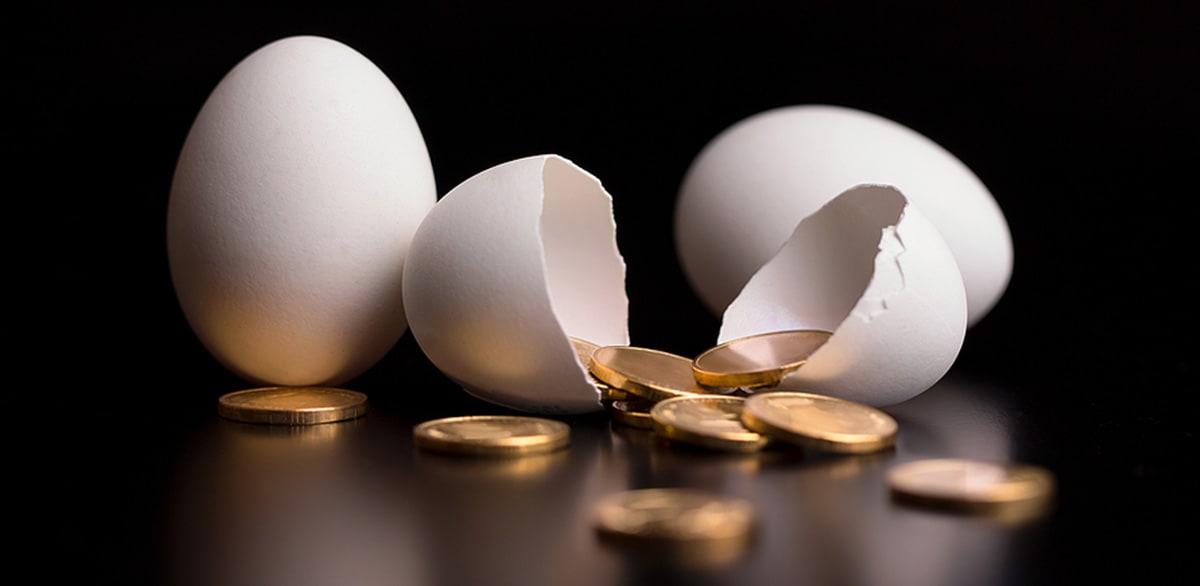
Gold has been a highly sought-after investment for millennia, but does it deserve a spot in your retirement portfolio? Certainly! Savvy investors know that diversification is key to building a resilient nest egg that can weather unavoidable economic instability. Gold is an essential piece of a well-diversified portfolio due to its long-term stability, inflation-hedge properties, and inherent value. Gold retirement accounts combine the tax incentives of retirement accounts with the investment advantages of physical metals.
How To Use Gold For Retirement
Investing in gold for retirement isn’t as simple as buying gold bullion or coins and calling it a day. Instead, investing in gold through a proper retirement account to take full advantage of tax-deferred growth and other incentives is worth considering.
Mainstream retirement accounts such as 401(k)s, Roth IRAs, and traditional IRAs offer exposure to paper gold assets in the form of mutual funds, ETFs, or mining stocks. However, these retirement plans don’t allow you to invest directly in physical metals, which can be a part of investment diversification strategy.
👉 Related: What is Diversification?
Investing in tangible gold for retirement is only permitted through a gold IRA – a type of self-directed IRA that opens up investors to a suite of nontraditional assets such as real estate, businesses, art, and precious metals.
Paper vs Physical Gold for Retirement
Not all gold retirement accounts are built the same. While paper assets have a lower barrier of entry, they only offer indirect investment in the gold market. That means your nest egg receives fewer of the advantages offered by gold owning physical gold. Alternatively, a gold IRA opens you up to all benefits of holding tangible metal assets. Besides, setting up a precious metals IRA is significantly easier and quicker than most people think.
Rollover Into a Gold IRA
Investors can establish gold retirement accounts by simply rolling over funds from their current retirement plans. The process is affordable, hassle-free, and reasonably cost-effective. Working with a Precious Metals Advisor and Gold IRA Liaison can streamline the process of a gold IRA transfer and ensure it aligns with your overall investment goals. In the end, a precious metals IRA works similarly to mainstream retirement accounts with the exception of permitting investments in physical gold.
Why You Should Invest in Gold for Retirement.
A nest egg solely comprised of paper assets (even those offering exposure to gold) opens investors up to avoidable risk. Any variety of paper commodities won’t achieve true diversification which is crucial when planning for retirement. There are plenty of incentives for investors to consider gold retirement accounts for their golden years.
Stable Growth
A well-positioned nest egg offers steady growth over the long term without too much volatility. Gold can help investors achieve this goal with greater stability when compared to fiat currencies and paper assets. For instance, the value of the US dollar has eroded by a staggering 99% against the price of gold since the 1930s. The right amount of exposure to gold assets can inoculate your nest egg from the nauseating ups and downs of paper markets.
Lower Risk
When investing in a stock, mutual fund, or ETF, you’re opening yourself up to what’s known as counterparty risk. That’s just a fancy way of saying the other parties involved in the trade could fail to hold up their end of the deal, resulting in an unexpected loss. While it’s impossible to avoid all counterparty risk when constructing a nest egg, you can manage it through exposure to gold assets which offer you greater control. That leads us to the next point.
Greater Control
Control and privacy have always been acute concerns for investors. However, these issues have found renewed importance as governments exert greater power, whether it’s Canadian Prime Minister Justin Trudeua’s decision to freeze the bank accounts of protestors or the Biden administration’s tinkering with a Central Bank Digital Currency through Executive Order 14067. The tangible nature of physical gold assets offers greater control and privacy for investors when compared to paper assets.
Inflation Hedge
Gold is a reliable hedge against inflation as it tends to have an inverse relationship to the rest of the economy. Generally, as markets falter and the dollar declines, gold increases in value. When the economy takes a turn for the worst, central banks, institutional investors, and retail investors move their wealth from paper assets into tangible assets driving up the value of gold. With enough exposure to gold, your nest egg will be optimized to handle downturns gracefully.
High Liquidity
Some investors avoid tangible assets due to the misconception that they’re challenging to sell. Understandably, people want to avoid tying up too much of their wealth in assets that are unnecessarily difficult to exchange for cash. In reality, physical gold is highly liquid because there’s always demand for this highly sought-after asset. Whenever you want to sell your gold coins, bars, or bullion, it won’t be difficult to get a reasonable offer quickly.
True Diversification
Don’t fall into the trap of assuming paper gold assets are sufficient for diversifying your retirement account. In reality, gold ETFs, mutual funds, and mining stocks are subject to the same market whims as other paper assets. Real diversification only comes through the ownership of physical gold assets in the form of bullion, coins, or bars. These tangible investments give your nest egg grounding in something physical and real.
How much of your retirement should be in gold?
Buying gold for retirement should be part of a holistic and diversified investment strategy. Generally, it’s recommended to contribute around 10% to 20% of your nest egg to gold and other precious metals. Too little exposure doesn’t allow you to take full advantage of gold’s wide range of benefits.
We’ve been seeing a transition from more traditional paper assets into hard assets over the past couple of years.–Precious Metals Advisor Damian White
If you’re interested in learning more about buying gold for retirement, reach out to one of our Precious Metals Advisors by calling 1 (888) 812-9892 or using our live chat function. They can answer questions, which can help you determine whether a gold IRA is right for your retirement goals.


